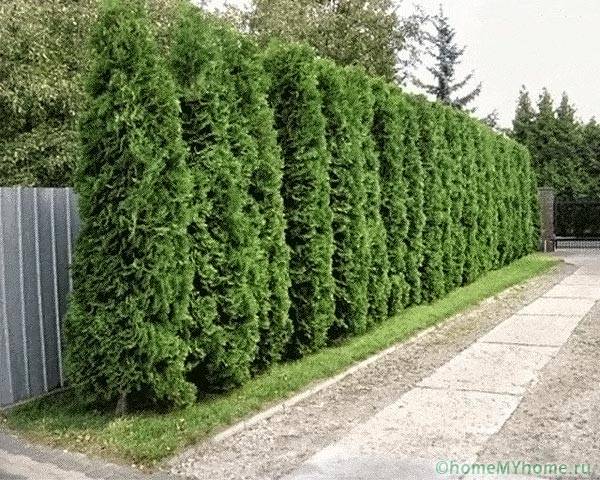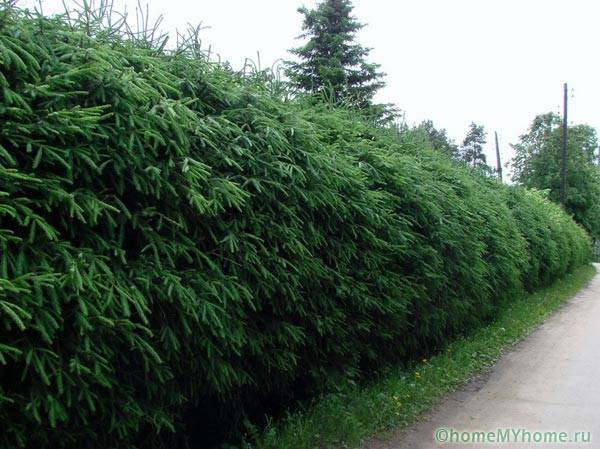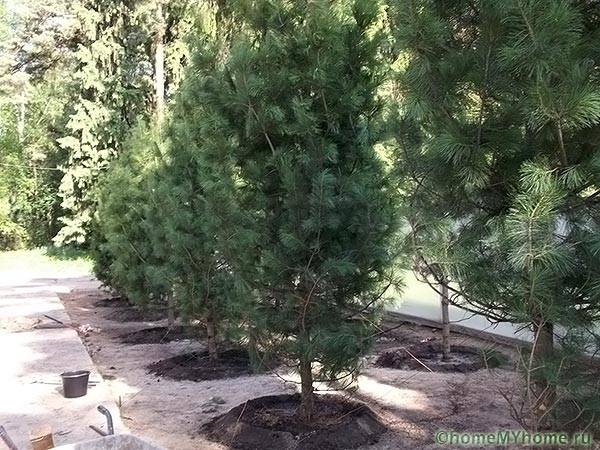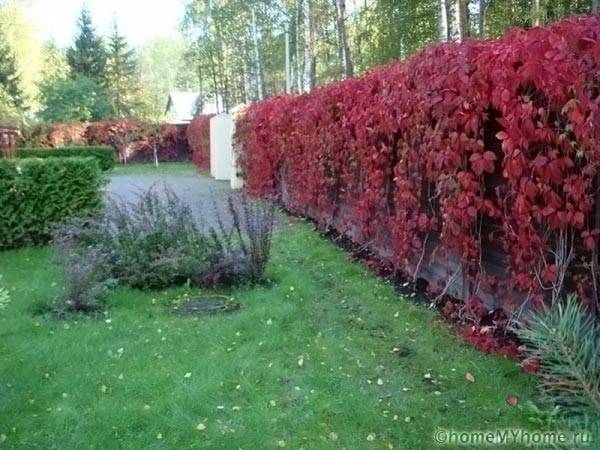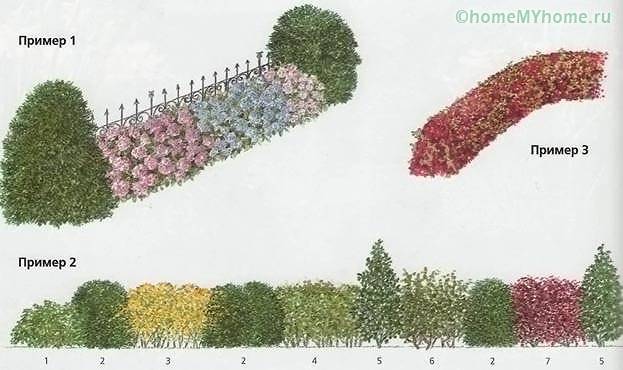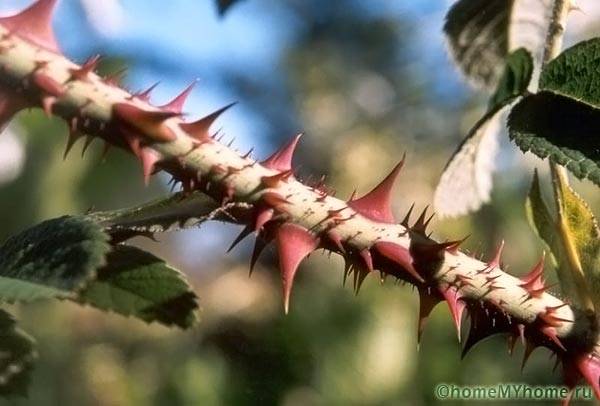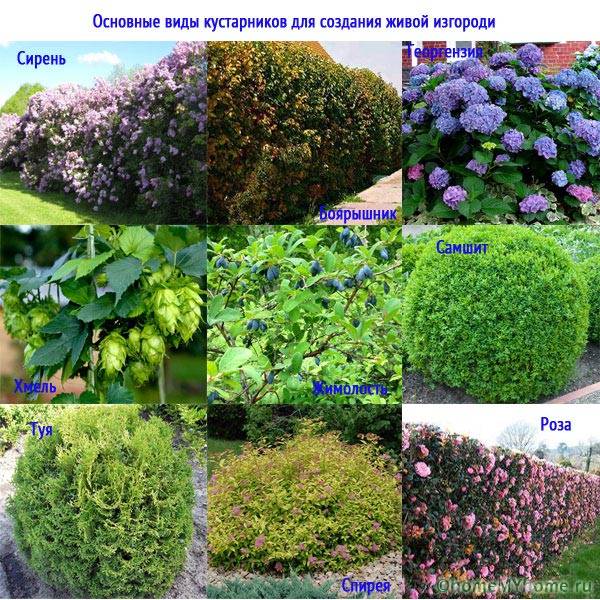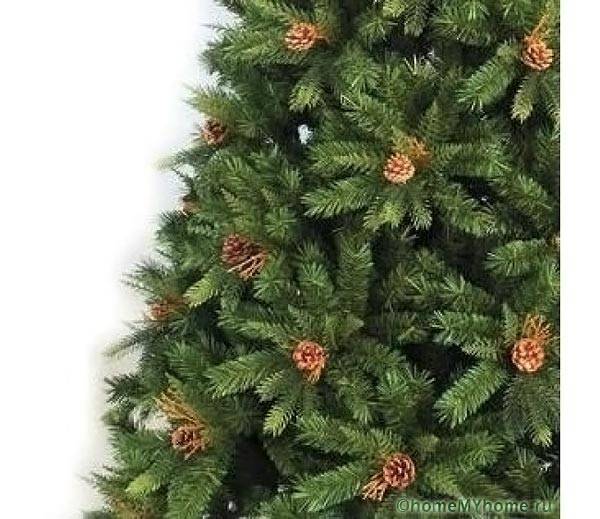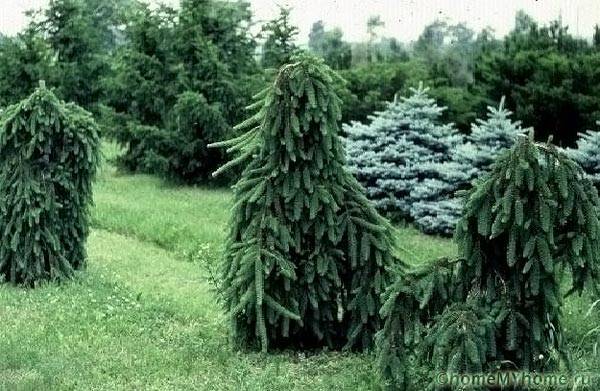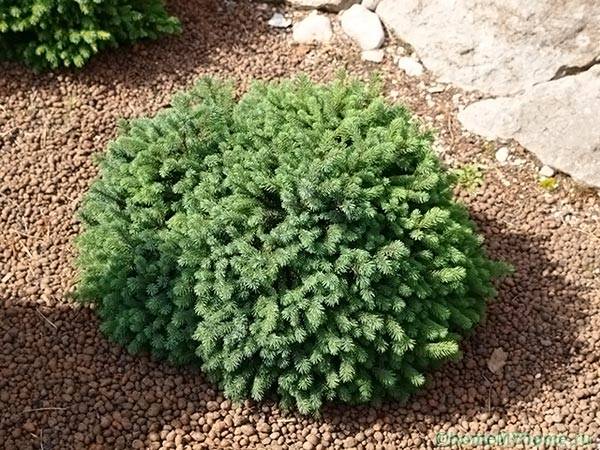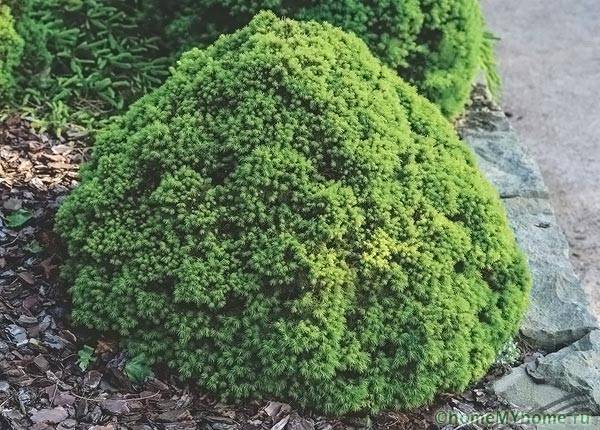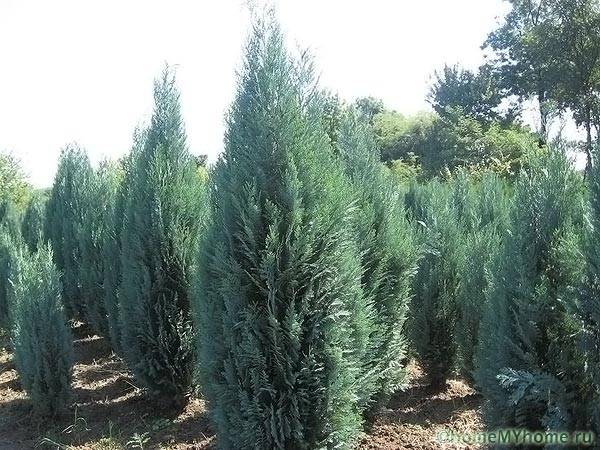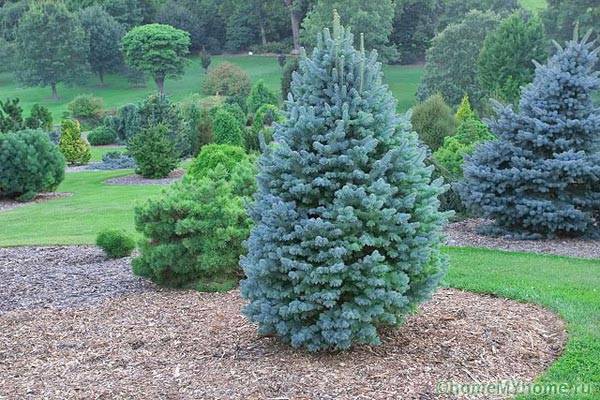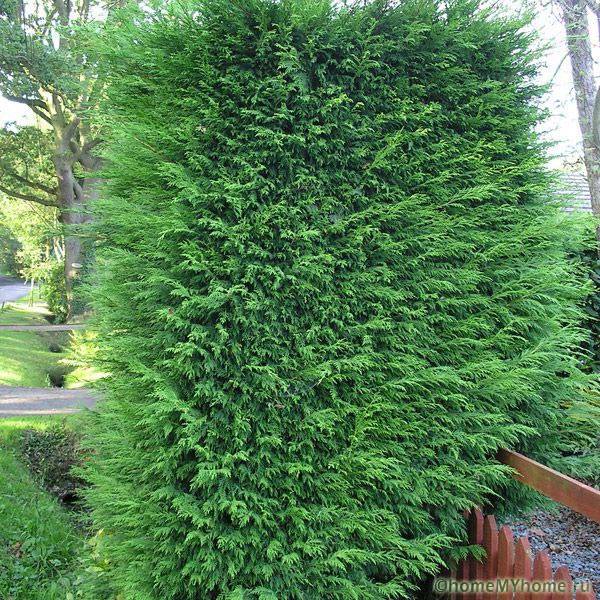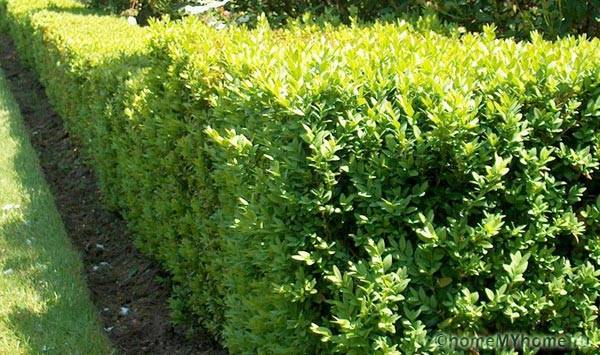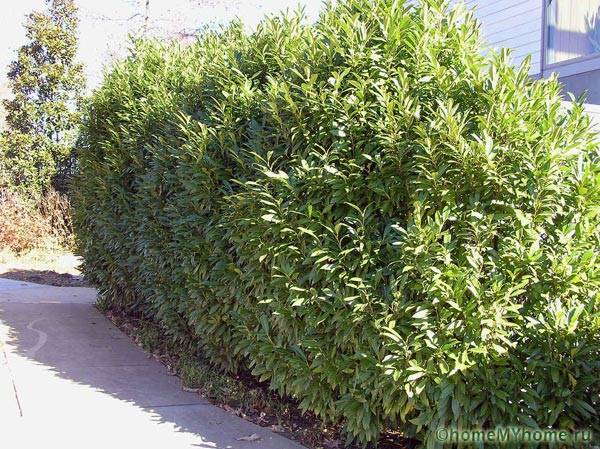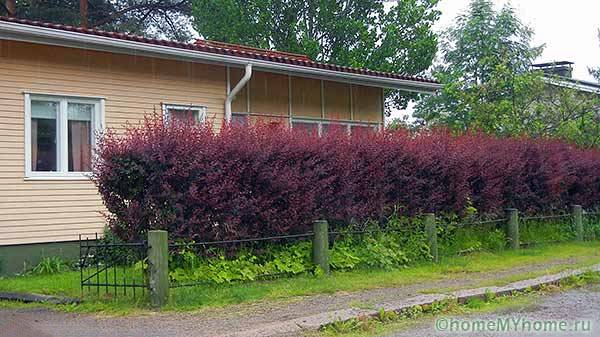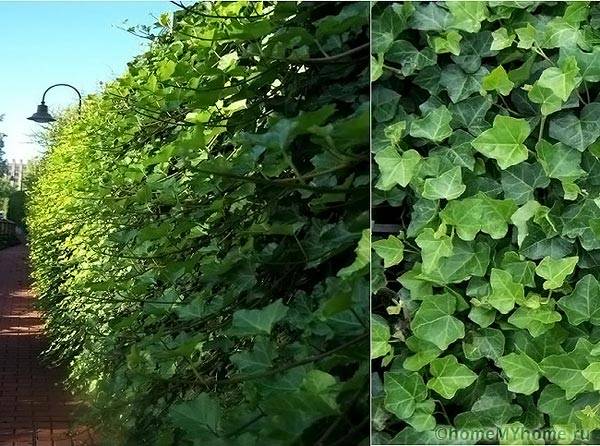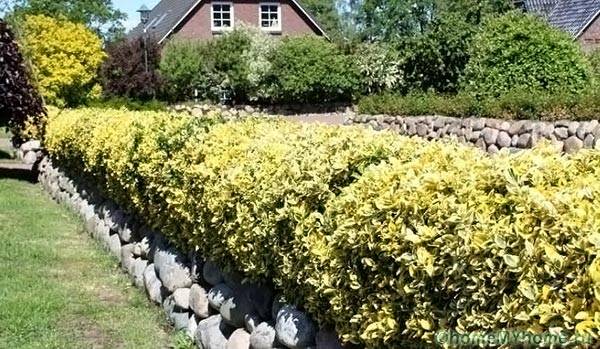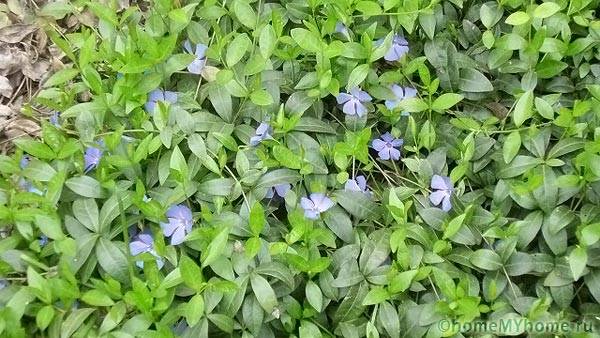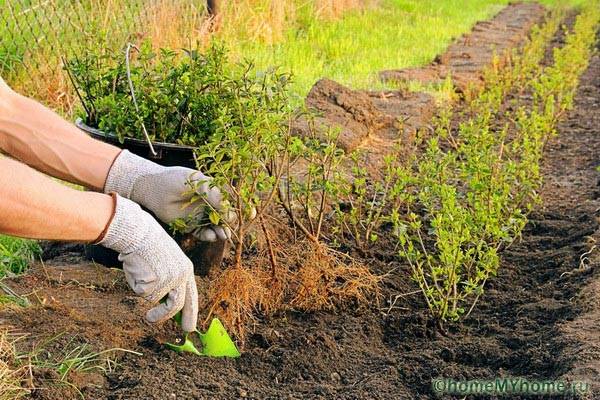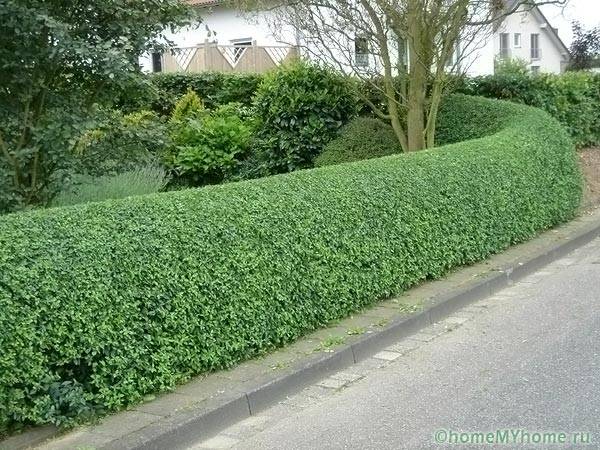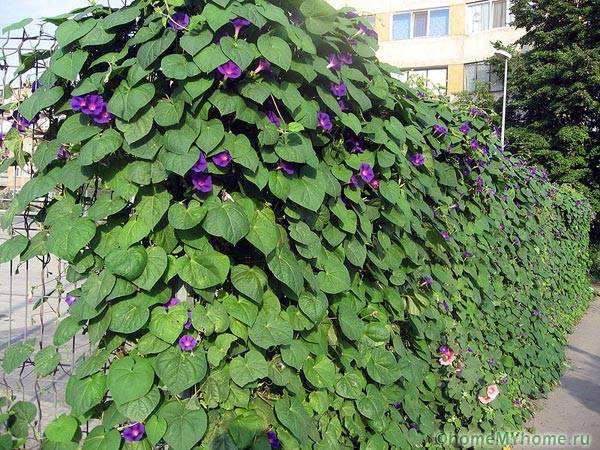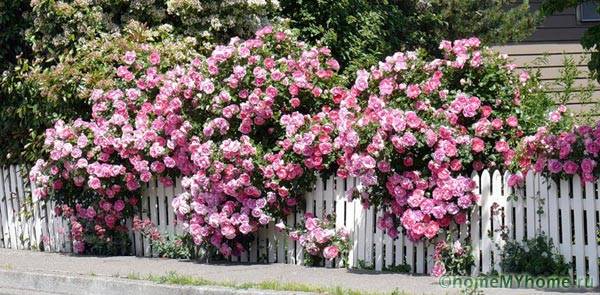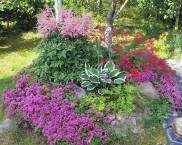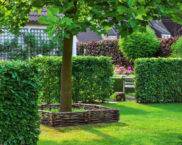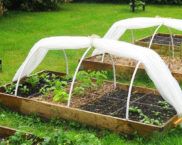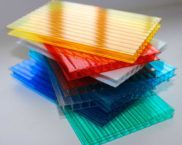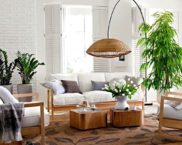Fast growing perennial evergreen hedge: how to use?
Aabsolutely environmentally friendly alternative to concrete, metal fences becomes a fast growing hedge perennial evergreen in the form of a decorative wall. Due to the intensive growth of the plantation, the owner does not have to wait several years for the fence to reach the level of 1.5 m. It is much easier to protect areas of complex configuration with shrubs than with long construction materials of high rigidity.
The content of the article
Video: beautiful ideas for a hedge
Perennial plant species
The most popular hedge is a fast-growing perennial evergreen of deciduous and coniferous plants. Moreover, along with traditional shrubs, small trees are widely used by loaches. The choice of specific breeds depends on the preferences of the owner, budget, landscape design, architecture of outbuildings.
Conifers
Spruce traditionally serves as an aristocratic hedge of a fast-growing perennial evergreen. However, only decorative varieties are used for fences. Before buying, it is recommended to take into account the cardinal points, the shade of the site. For example, for trees with dark needles, partial shade is more suitable, with blue, golden needles - sunny areas.
Useful advice! Conifers poorly tolerate clay (low air permeability at the roots), high groundwater. Recommended periodicity of horses in rows 25 - 55 cm, landing in one line.
The holes are made at the time of planting throughout September or in cloudy weather at the end of summer. Lumps of soil mixture on the roots should be transferred to the hole so as not to accidentally damage them.
Deciduous
There are much more species of deciduous plants, therefore, shrubs and loaches are used in living fences. The seedlings will reach a height of 1 m in the first year, in the next season they will reach 2 m.
It should be noted that the care of bushes, loaches should be regular:
- greens of different types do not develop in the same way, so plantings should be formed;
- neighbors and own beds should not suffer from the penetration of loaches;
- inside the bush, you can cut arches to organize an additional entrance to the site;
- in addition to decorative, fruit-bearing varieties can be planted.
If maximum vandal resistance of the site and the plants themselves is required, perennials with thorns and thorns are optimal.
Description of the most popular options
A fast-growing perennial hedge is being designed, depending on the climate, soil, relief of the site. Some plants get along well with each other at different levels of the fence, receiving the required amount of lighting, without damaging each other. Others do not tolerate the neighborhood well.
If you need a high fence, you should consider breeds that differ in the density of branches that do not feel discomfort with a tight planting:
- Arkorona - large beautiful cones, straight-stemmed, dark needles, hanging paws, conical crown, width / height 3/4 m, respectively;
- Inversa - frost-resistant, hanging brushes, the trunk needs a garter;
- Konica - gray hard paws, frost-resistant, soft needles, closed conical crown, height within 2.5 m.
Small decorative fences are obtained from dwarf firs:
- Ehiniformis - crown in the form of a pillow or ball;
- Little Jam - A spherical crown haircut is preferable.
Less popular conifers:
- Lawson's cypress;
- balsamic or Arizona fir;
- thuja Brabant;
- decorative cupressocyparis of Leyland.
Among deciduous varieties as a living fence leading:
- boxwood - unpretentious, allows you to implement a swift of any shape, is planted in spring with a frequency of 15 cm roots, the crown should be leveled monthly (the first year is not trimmed);
- cherry laurel - only a medicinal variety is fast-growing, the inflorescences are large, white, unpretentious to lighting, does not bear fruit, does not bloom without glaze, the frequency of plants in fence 50 - 60 cm, haircut once every six months;
- barberry - a living wall turns out to be impassable, since the bushes are thorny, it is best to plant in one row in spring / autumn, trimming in summer (main), in spring (thinning), dry branches are removed so that fruiting is stable.
To reduce labor costs for caring fence from the variety of loaches, it is better to choose perennial plants:
- ivy - unpretentious to watering, but autumn pruning, periodic feeding is needed, for the winter it is covered with foliage, branches;
- euonymus - frequent watering is required, the plant is capricious to an excess of moisture, the soil is needed fertile, the flowers are poisonous, therefore it is not recommended for families with young children;
- periwinkle - stretches up to 1.5 m, a very tenacious plant that tolerates frost well, the inflorescence is large, often blue, stable during drought, grows on poor soils.
Examples of using
Due to the diversity of the climate, the operational features of the site, the best recommendations on the issue of a hedge from which it is better to make will be the advice of neighbors who have implemented such fences at home.
For hot regions, a cotoneaster is optimal; when planting, sand, large drainage is added to the holes, preferably sunny areas. Height fence reaches 3 - 5 m, the plant blooms for two weeks (March / April).
A budget solution for a garden, a summer residence is a dwarf thorn, which does not need to be constantly looked after. During flowering, the owner gains an additional benefit - an unusually bright almond aroma throughout the entire area.
Unlike bushes, trees, loaches do not provide protection for the courtyard, but somewhat mask the site from curious passers-by. Annual flowering panels can be obtained from weaving of nasturtium, decorative beans, sweet peas, kobei.
Climbing roses (climbing variety) are more effective, but they are not recommended to be planted as an external fence. This plant does not tolerate wet soils with a groundwater level higher than 2 m from the roots. With a vertical garter, the effect of a live fence is practically absent, therefore it is better to use horizontal trellises.
Conclusion
Thus, the owner of a suburban area can arrange live fences on their own without the help of specialists. It is enough to decide on the required density fence, take into account the composition of soils, the level of GWL and the relief.
Video: DIY hedge




